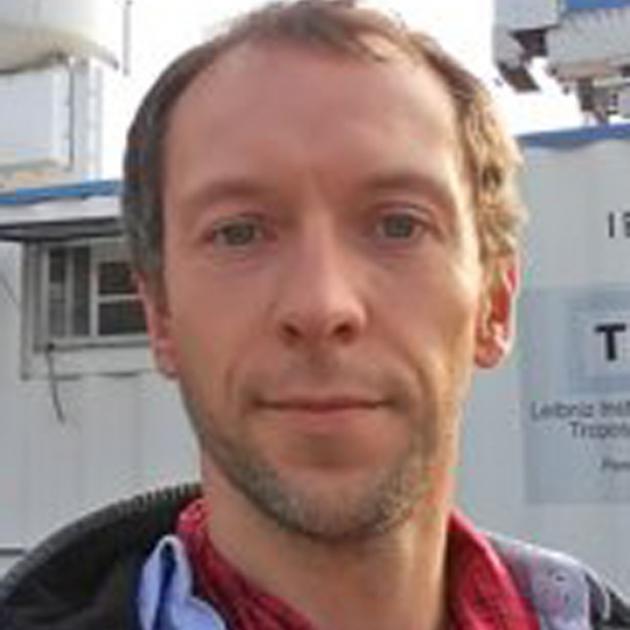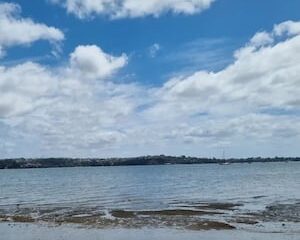Science
Laser Research Project Launches to Examine Aerosols in Atmosphere

A new atmospheric research project using lasers has been initiated at the MetService site near Invercargill Airport, New Zealand. The project, known as goSouth-2, aims to gather critical data on how aerosols—tiny airborne particles—affect the atmosphere. This collaborative effort involves institutions from both Germany and New Zealand, including the Meteorological Institute of the University of Leipzig and the Leibniz Institute for Tropospheric Research (TROPOS), along with New Zealand’s MetService, the University of Canterbury, and The Air Quality Collective.
On September 3, 2023, the project will officially commence with five TROPOS researchers setting up essential equipment at the Invercargill site. According to Patric Seifert, a researcher with TROPOS, aerosols come from various sources, including the sea and land, and can include substances like salt, dust, pollen, and smoke particles from natural events such as volcanic eruptions.
Understanding Aerosols and Cloud Formation
Dr. Seifert emphasized the crucial role of aerosols in cloud formation. These particles act as nuclei for cloud droplets to form around. “The less aerosol particles are available, the less cloud particles can form, and vice-versa,” he stated. This unique research location at the southern tip of New Zealand allows scientists to study the atmospheric conditions influenced by contrasting air masses. When air approaches from the Antarctic, the atmosphere can be exceptionally clean, whereas air masses from Australia can bring higher levels of aerosols.
The project aims to investigate how variations in aerosol levels impact cloud formation and behavior. Dr. Seifert pointed out that atmospheric and climate models have traditionally struggled to accurately simulate clouds over the Southern Ocean compared to the northern hemisphere. He believes the disparity in aerosol levels between the two hemispheres may be a significant factor in this discrepancy. Data collection in the northern hemisphere has been more extensive, revealing a more polluted atmosphere.
Research Equipment and Community Involvement
Invercargill was selected for its logistical support, which facilitates the operation of equipment and accommodation for staff. The MetService has already conducted vital observations at the site, including long-term weather balloon soundings, precipitation measurements, and solar and thermal radiation assessments. While the majority of the information-gathering instruments will be land-based, residents near Invercargill Airport may notice a green laser beam in the sky as part of the research.
“Our lidar [light detection and ranging] systems emit laser pulses to investigate the aerosols,” Dr. Seifert explained. The laser beam is fixed in position, and airport personnel have been informed about its presence. In addition to lidar, radar systems will also be employed to detect and analyze clouds and precipitation. The TROPOS team will remain on-site for 18 months, while a group of approximately 15 researchers will analyze the collected data in Germany.
Previously, in 2022, the goSouth-1 project was conducted about 50 kilometers from Invercargill, albeit with less equipment and for a shorter duration. This new phase promises to deepen understanding of aerosol impacts on atmospheric dynamics and cloud formation, contributing valuable insights to the field of atmospheric sciences.
-

 World1 week ago
World1 week agoPrivate Funeral Held for Dean Field and His Three Children
-

 Top Stories2 weeks ago
Top Stories2 weeks agoFuneral Planned for Field Siblings After Tragic House Fire
-

 Sports3 months ago
Sports3 months agoNetball New Zealand Stands Down Dame Noeline Taurua for Series
-

 Entertainment3 months ago
Entertainment3 months agoTributes Pour In for Lachlan Rofe, Reality Star, Dead at 47
-

 Entertainment2 months ago
Entertainment2 months agoNew ‘Maverick’ Chaser Joins Beat the Chasers Season Finale
-

 Sports3 months ago
Sports3 months agoSilver Ferns Legend Laura Langman Criticizes Team’s Attitude
-

 Sports4 weeks ago
Sports4 weeks agoEli Katoa Rushed to Hospital After Sideline Incident During Match
-

 Politics2 months ago
Politics2 months agoNetball NZ Calls for Respect Amid Dame Taurua’s Standoff
-

 World2 weeks ago
World2 weeks agoInvestigation Underway in Tragic Sanson House Fire Involving Family
-

 Top Stories2 weeks ago
Top Stories2 weeks agoShock and Grief Follow Tragic Family Deaths in New Zealand
-

 Entertainment3 months ago
Entertainment3 months agoKhloe Kardashian Embraces Innovative Stem Cell Therapy in Mexico
-

 World4 months ago
World4 months agoPolice Arrest Multiple Individuals During Funeral for Zain Taikato-Fox




















